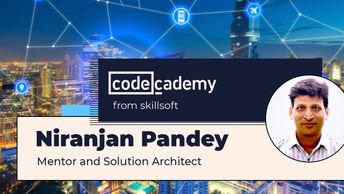A fundamental duty of a technical support engineer is to implement effective DevOps continuous monitoring.
In this course, you'll identify the key components and patterns used to implement DevOps monitoring systems, the KPIs for analyzing the state of in-use IT systems, the best practices for defining effective outcomes with monitoring and alerting mechanisms, and how to monitor diversified applications. You'll also name the key components of multi-tier applications, the metrics to monitor for tracking an applications' overall performance, and prominent tools for adopting a flow monitoring strategy.
Additionally, you'll identify information system security risks and outline techniques for defense in depth implementation, data-center monitoring, and security monitoring and comprehensive reporting. Finally, you'll learn to use commands to monitor server CPU, memory, disk usage, network, and load statistics.
| Objectives |
|---|
Monitoring in DevOps: IT Resources
|


